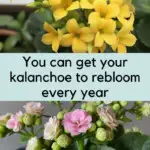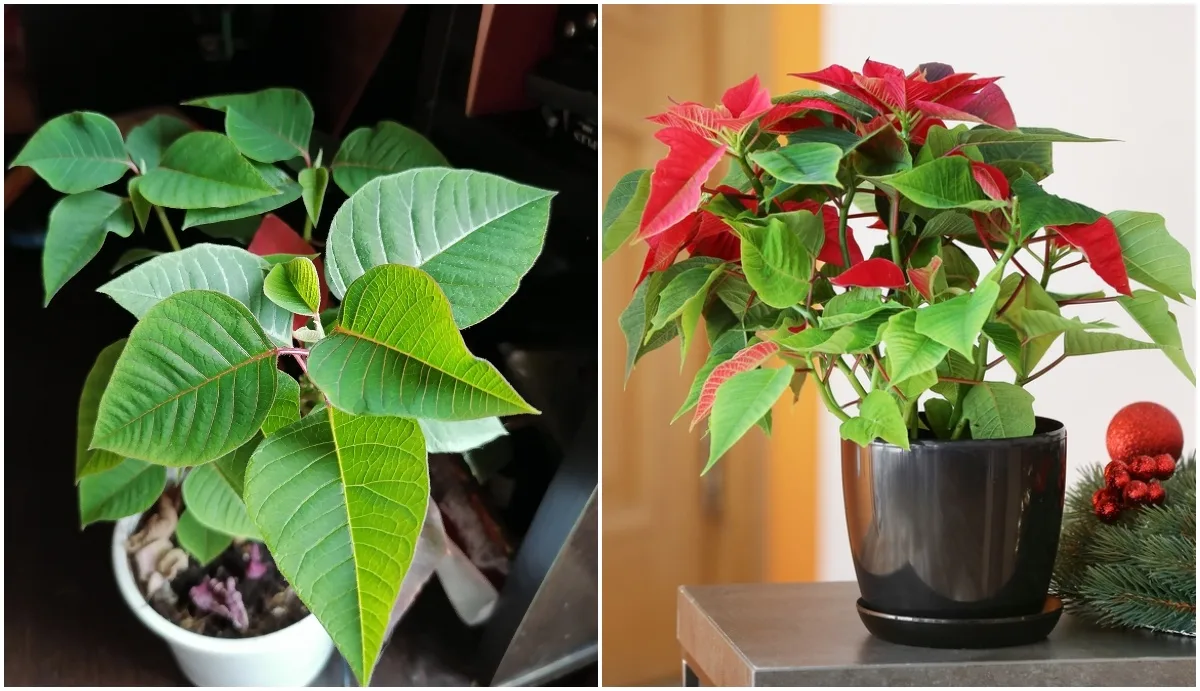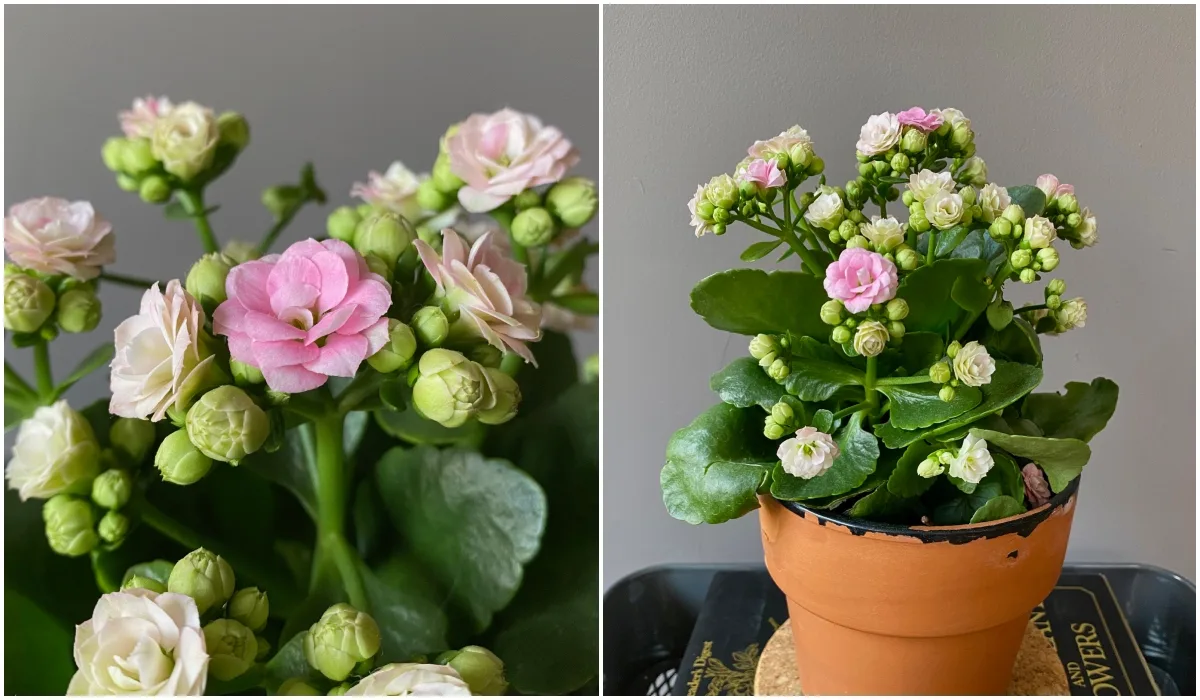
If I showed you my six-year-old kalanchoe plant, you’d be hard-pressed to identify what it actually is. It looks part succulent, part weird sculpture and part mythical tree straight out of a fairytale penned by the Brothers Grimm.
This often happens to my houseplants because I’m a stubborn plant keeper. Some people simply dispose of their kalanchoe after it blooms, but I dig my heels firmly in the “I can make this flower again” camp.
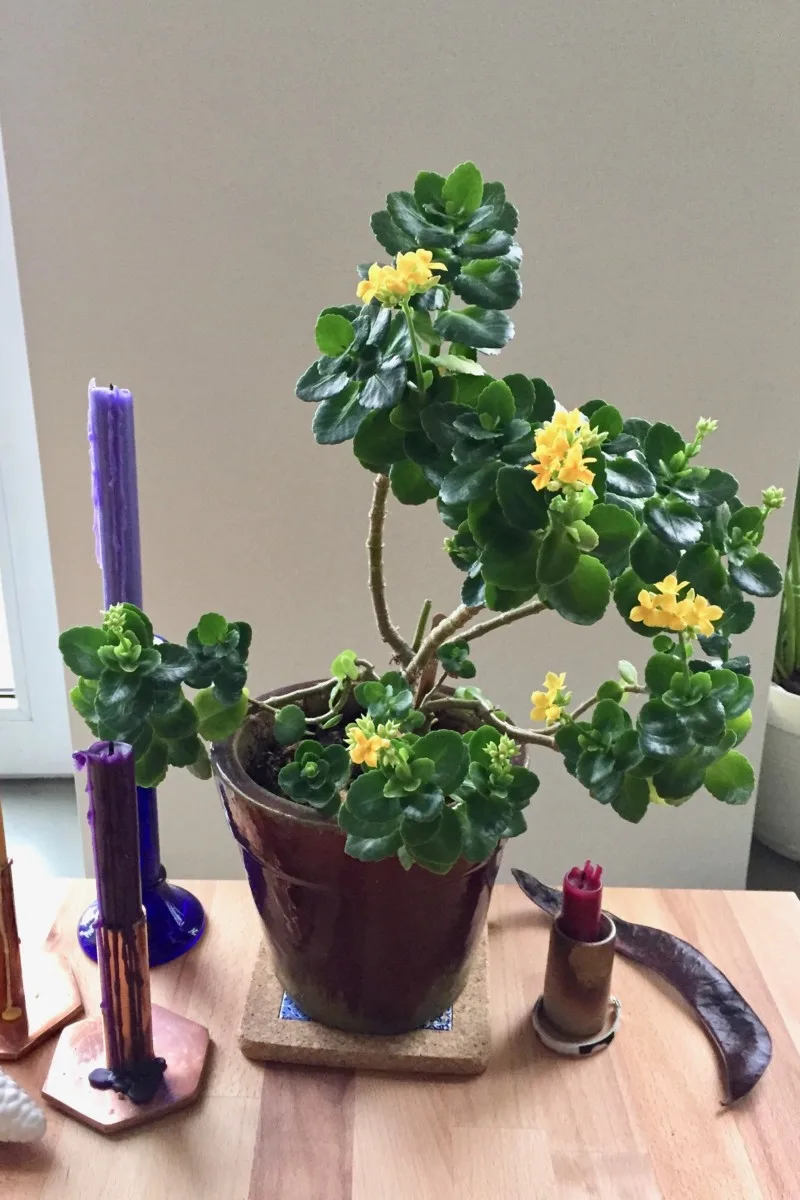
So far, so good! My oldest kalanchoe plant is on its fifth rebloom in just as many consecutive years.
So if you’ve bought a kalanchoe as a holiday decoration and you’re tempted to just chuck it out with the Christmas tree, think again.
How do you get kalanchoe to flower (again)?
Let’s get on the same page first. The plant we’ll be talking about in this article is Kalanchoe blossfeldiana, also known as florist’s kalanchoe. You may also know it as Christmas kalanchoe because it’s very popular this time of year.
You’ll often find it for sale at the same time as other popular houseplants that start blooming around Thanksgiving and last all through the holidays, such as cyclamen, schlumbergera and poinsettias.
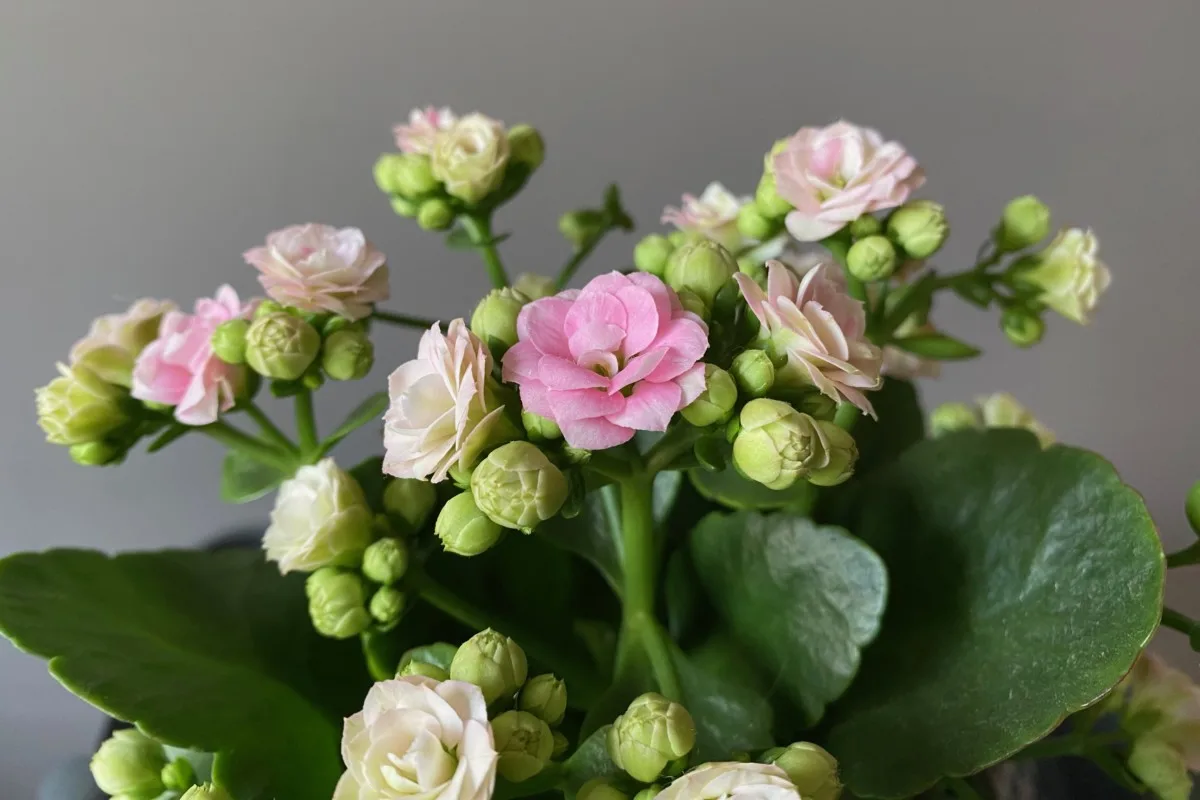
And just to make sure we’re clear, we’ll be talking about two types of care: regular care (kalanchoe when it’s not in bloom) and rest period care (kalanchoe right before bloom).
The plant does require two sets of instructions, depending on what stage of its blooming cycle it’s in. But it’s not complicated. I still think that Kalanchoe blossfeldiana is a very low-maintenance and forgiving plant.
Does kalanchoe rebloom every year?
Yes, kalanchoe reblooms every year, as long as you let it go through a period of rest. Kalanchoe usually blooms in the months with shorter days and longer nights.
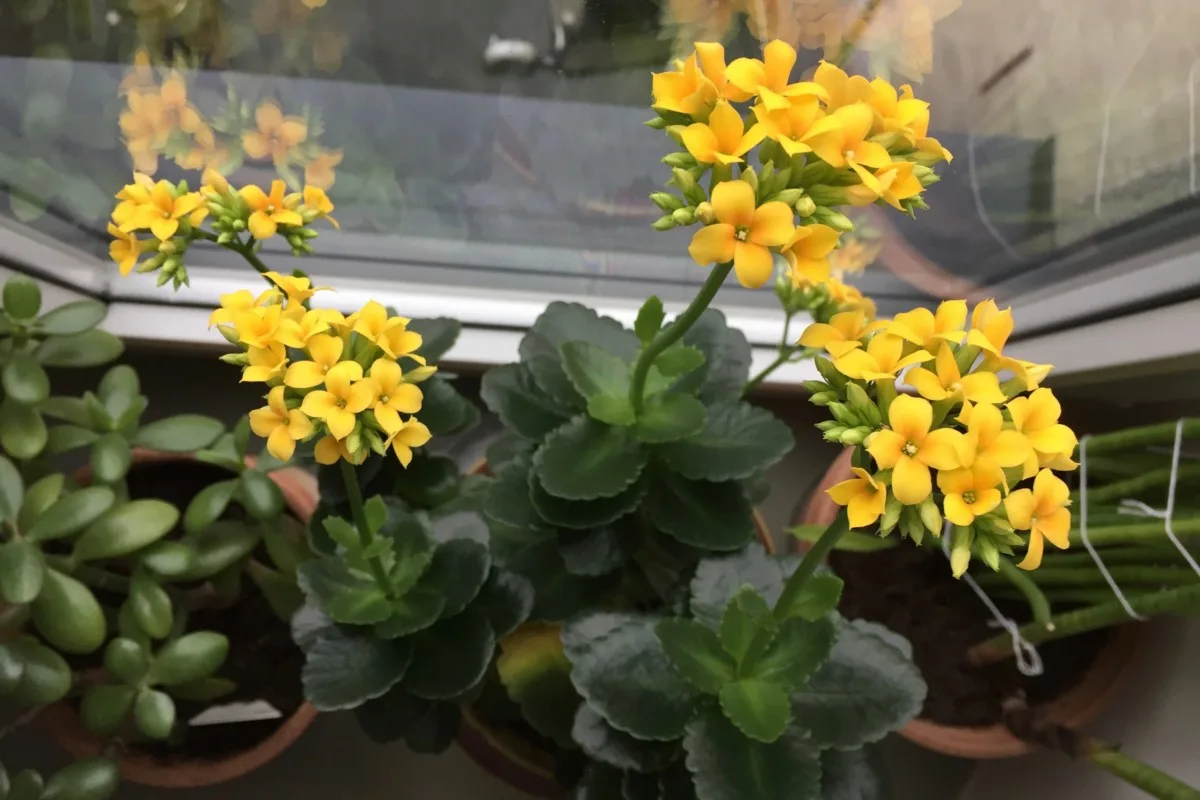
In my temperate climate, my kalanchoe plants usually bloom between November and May. Most years, the kalanchoe flowers for around five to six months. Some years, the blooms will only pop up in December, but will last until June.
This is a slow-blooming plant, meaning that you’ll have unopened buds for a month in the beginning; you’ll also have clusters of brown spent flowers for a month at the end of the blooming period.
The period in between is still stunningly beautiful. I’m very grateful for my indoor kalanchoe in full bloom when almost everything in the garden looks dead and brown in the middle of winter.
What do I do with my kalanchoe after it blooms?
Once the flowers are gone, all you have to do is treat it as you would any other succulent. The beauty of this plant is that, even without flowers, the glossy scalloped leaves make for a very attractive houseplant.

If you place it in a sunny spot and give it water when the soil feels dry to the touch, it will continue to grow and thrive all through the summer. If you want the clusters of bright colorful flowers to come back, then you’ll need to make some adjustments come fall.
4 Factors that contribute to kalanchoe reblooming.
In order for kalanchoe to flower again, there are a few things that need to happen.
1. Kalanchoe needs fewer daylight hours in order to bloom.
Just in case the rubbery leaves and the juicy stems don’t give it away, let me make it clear: kalanchoe is a succulent. It shares a family, Crassulaceae, with other popular succulents such as jade plants, sempervivum and echeveria.
This means that, in general, it does well in bright sunlight. During the summer months, it will be very happy if it gets eight hours of sun a day. You can also grow it outdoors during the summer, as long as you place it in dappled shade.
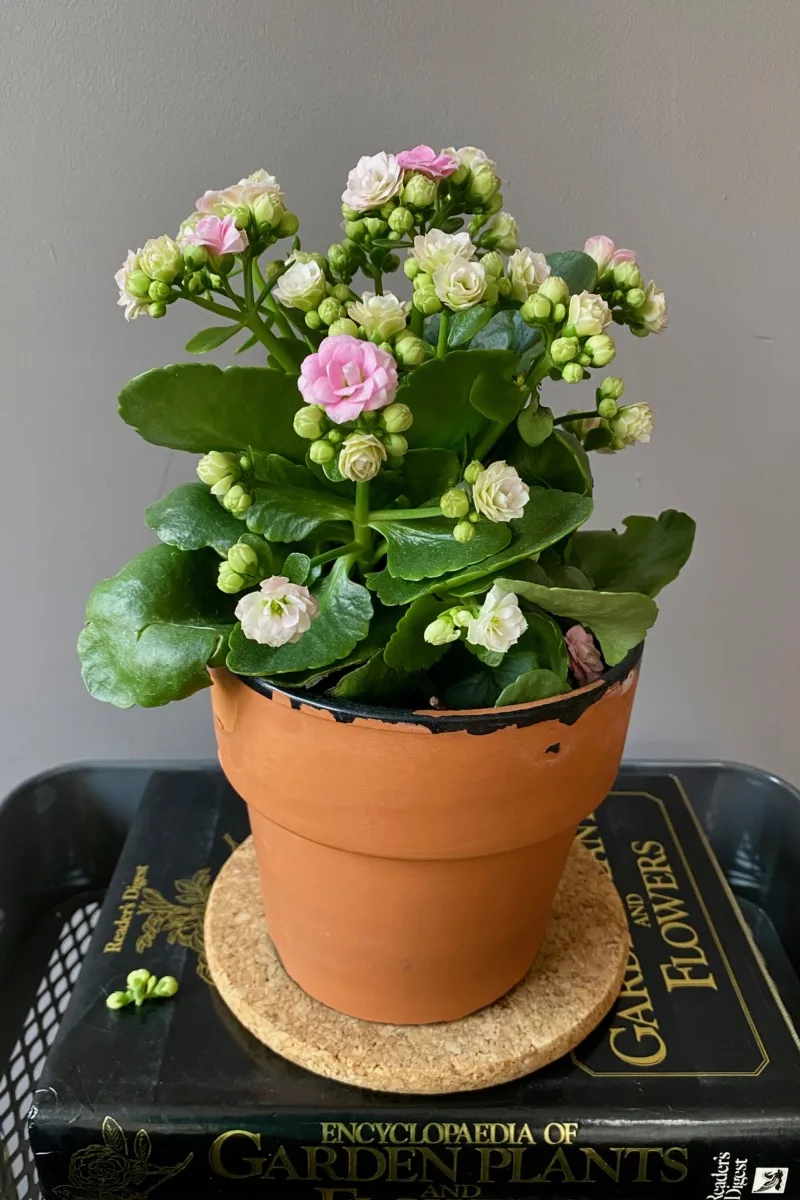
However, kalanchoe is what’s called a “short-day plant,” much like our other Christmas friend, the poinsettia. This plant response to daylight/darkness lengths is called “photoperiodism.” Therefore, during its period of pre-bloom rest, you must shelter it from too much light.
If you want your kalanchoe to bloom around Christmas, you need to facilitate a rest period of about two months starting in mid-fall. Some gardeners prefer to round this up to ten weeks, while others think six weeks is enough.
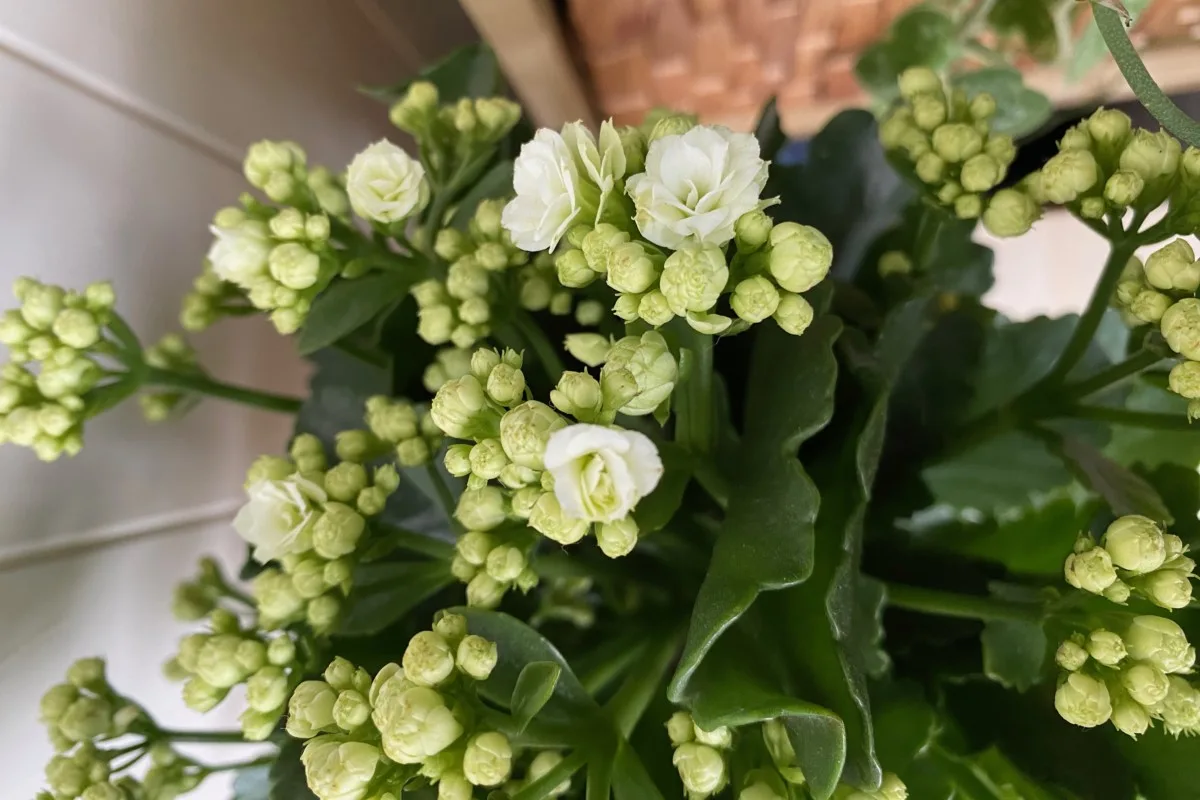
During these two months, the plant must get about 12 to 14 hours of total uninterrupted darkness. This period of darkness doesn’t just refer to natural daylight, but to artificial light as well. However, don’t mistake this for total 24-hour darkness. It’s important for the plant to have access to some light (whether natural or artificial) for the rest of the day.
Find a “darkness routine” for your kalanchoe.
For my plants, I found that two months of natural rest usually hit the right spot. For my kalanchoe to flower again at the end of November, I start these preparations in late September.
That’s when I move the kalanchoe from their usual spot next to a large south-facing window to our much darker and much cooler bedroom. I roll down the light-blocking blinds around 5 PM and keep them down until 8 AM the following day. That gives my winter-blooming plants a period of rest of about 14 hours.
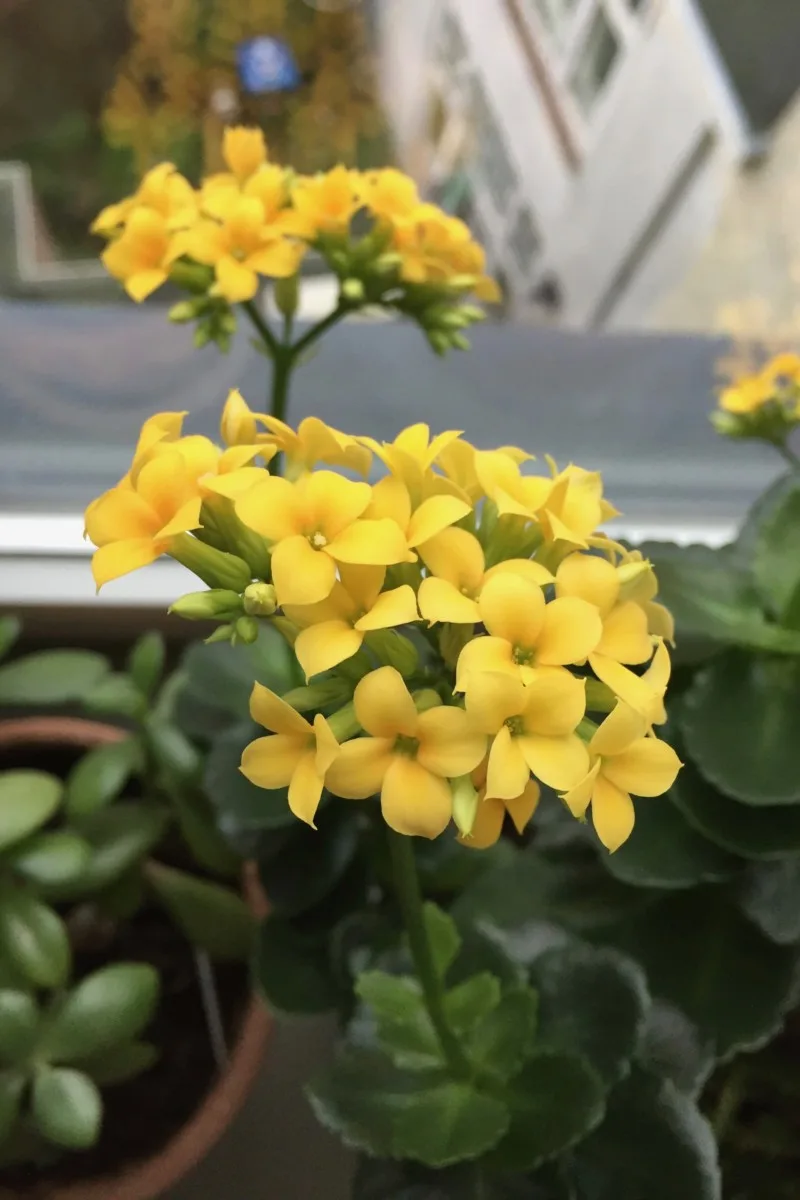
When I didn’t have a separate room available, I cleared a shelf in my coat closet for my kalanchoe collection. I’d put it in there when I came back home and took off my coat; I then took out the pots in the morning when I opened the closet door again to retrieve my coat.
If there’s no space in any of your closets, you can place the plant under the kitchen sink, in a spare bedroom or in the darkest corner of your house. Alternatively, you can place a bucket, a paper bag or a cardboard box on top of your kalanchoe for 14 hours every day. But only if you set a reminder on your phone to get into the habit of bringing your kalanchoe back to light.
I wouldn’t count on my frazzled memory to remember to uncover the plants. So what worked for me was tying this action to an already existing routine.
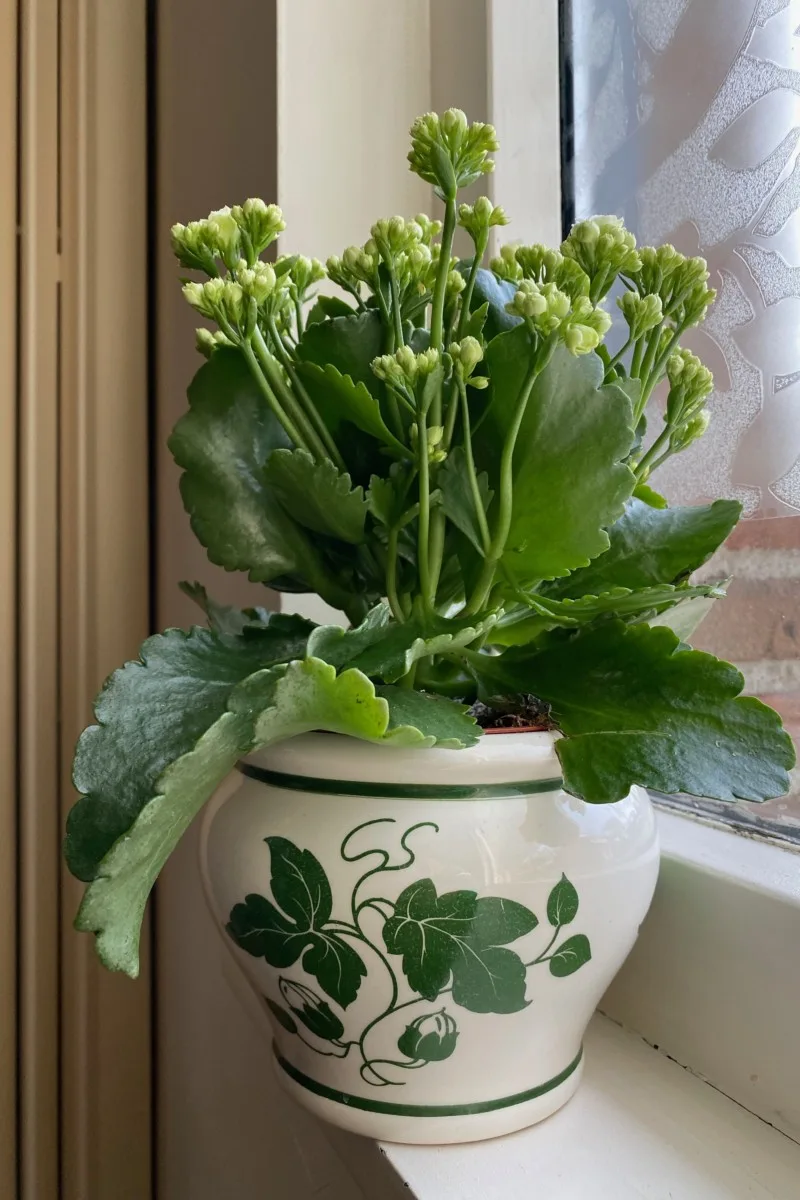
Once the plant sets buds, you can stop worrying about mandatory darkness. Just place it somewhere you can enjoy its showy display of blooms. My plants go back to their usual spot in the south-facing window. Which, to be fair, doesn’t get too much sunlight from November to March anyway.
2. For kalanchoe to rebloom, you should reduce watering.
Like all succulents, kalanchoe prefers dry conditions to being overwatered. In the summer, it needs more water because it’s growing and storing energy. The water also evaporates faster through perspiration when the plant is soaking in bright sunlight. Even so, you should only water it when the soil feels slightly dry to the touch.
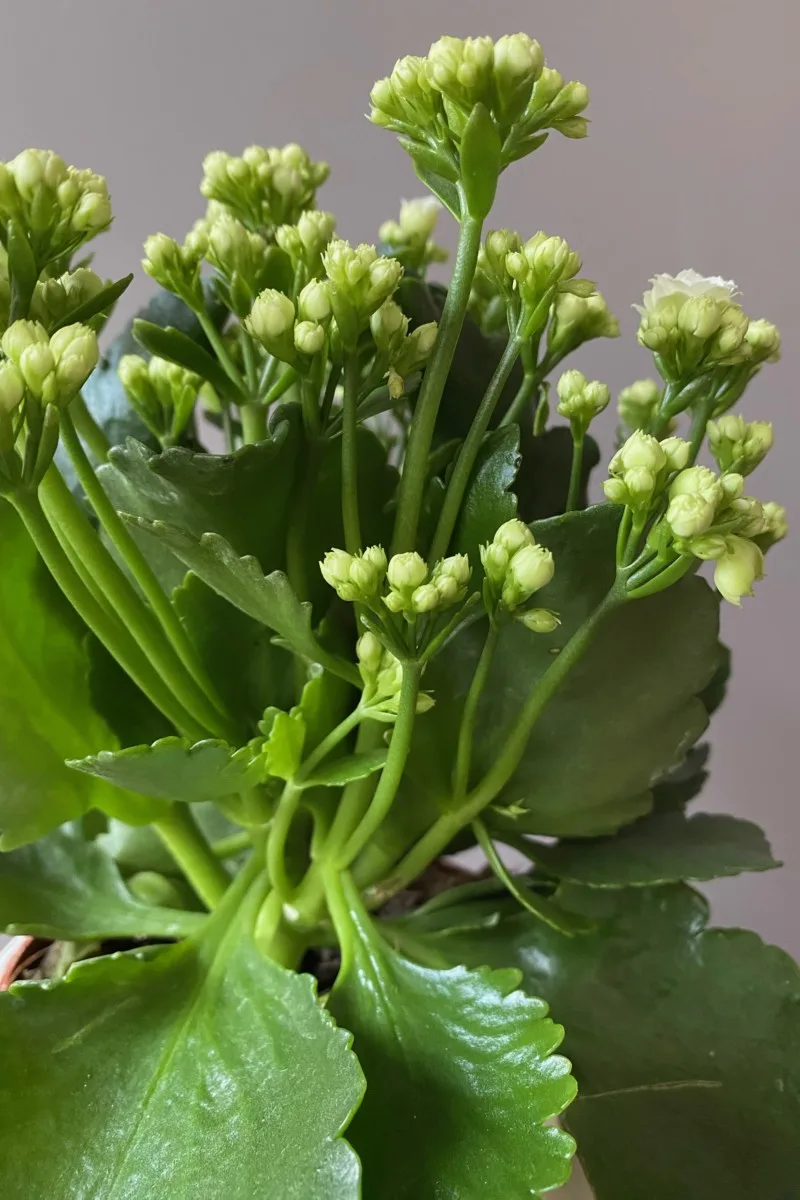
As the days get shorter, and kalanchoe enters its period of well-deserved rest, its watering needs to taper down. I usually go from watering every week to watering it once every three weeks or so.
Once the kalanchoe flowers start opening up, you may notice that this succulent dries up faster. So it’s time to adjust its watering again, increasing its frequency as the days get longer in the spring.
As always, the best indication of watering needs will come from the plant itself. I don’t water my kalanchoe if its soil is even mildly damp.
3. Help kalanchoe bloom again by keeping it cool.
In the summer, whether you keep kalanchoe outdoors or inside, it can handle temperatures in the mid-80s F (26-29C), as long as you don’t leave it out in the scorching sun.
But starting in mid-September, make sure you place your kalanchoe in a cooler location. Florist’s kalanchoe likes a nighttime temperature of about 60F (around 15.5C) in order to start setting buds.

Cool nighttime temperatures (around 50F, 10C) will prolong the life of the blooms, but these temperatures may not be realistic inside our homes in the middle of winter. But if you have an insulated sunroom or enclosed porch that constantly stays around these temps, your kalanchoe will like it very much.
During daylight hours, the temperature can go as high as 70F (21C), but not higher. Temperatures above 75F (almost 24C) will delay and reduce flowering.
In the winter months, when we heat our homes more, it’s important to keep this succulent a good distance away from baseboards, fireplaces and radiators.
4. Do not fertilize your kalanchoe if you want it to rebloom.
I don’t fertilize my kalanchoe much. But if you have been fertilizing them during their summer growth spurt, it’s time to put an end to this practice. At least temporarily.
It may seem counterintuitive, especially if you’re used to feeding your garden plants in full bloom. But kalanchoe is a short-day plant that does not need extra nutrients when it’s trying to rest.
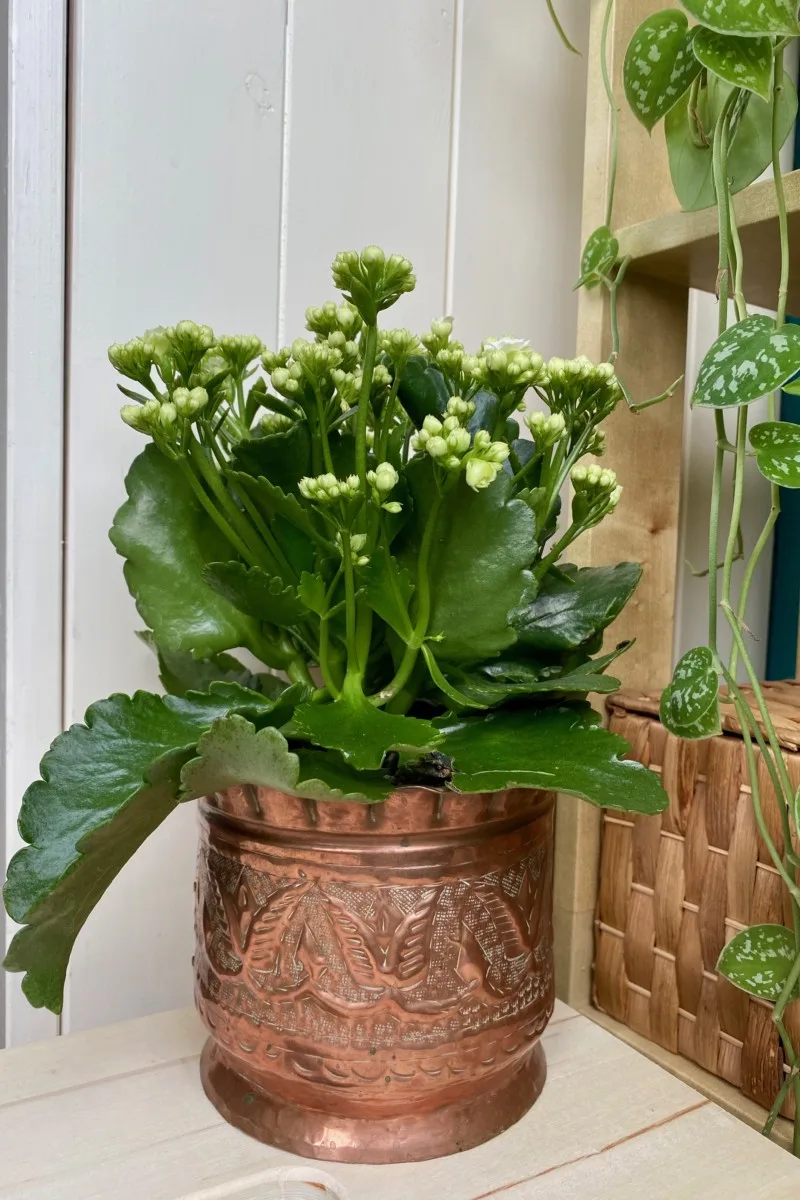
3 Things you should know about flowering kalanchoe.
Your kalanchoe might get leggy over time.
If you grow kalanchoe as a houseplant, it will grow leggy as it reaches for more light. This will not interfere with bud formation. A leggy kalanchoe will still bloom. My five-year-old kalanchoe spent every single minute of its long life as an indoor houseplant and it’s still flowering like clockwork.
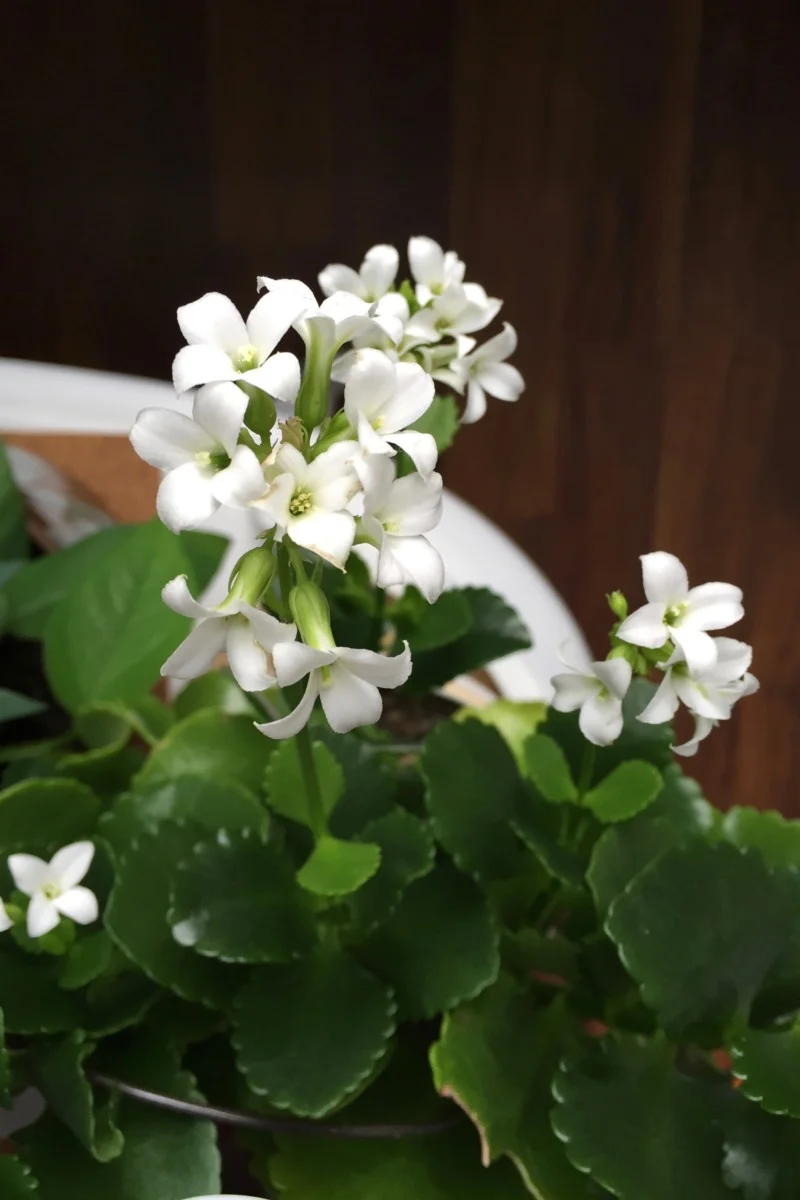
I happen to like gangly tall succulents. But if you don’t like leggy kalanchoe, you can just pinch it down to just above a larger set of leaves. It’s better to prune it in the spring and summer, before it starts setting buds.
You can snip back the spent flowers.
Once the flowers start to turn brown and die off, you can remove them. Often, this will not result in more blooms, since the buds are already set. But the buds that haven’t opened yet will do so sooner, thus giving the impression of extra blooms.
You can also let the flowers die back on their own. The petiole will turn crispy brown and fall off eventually.
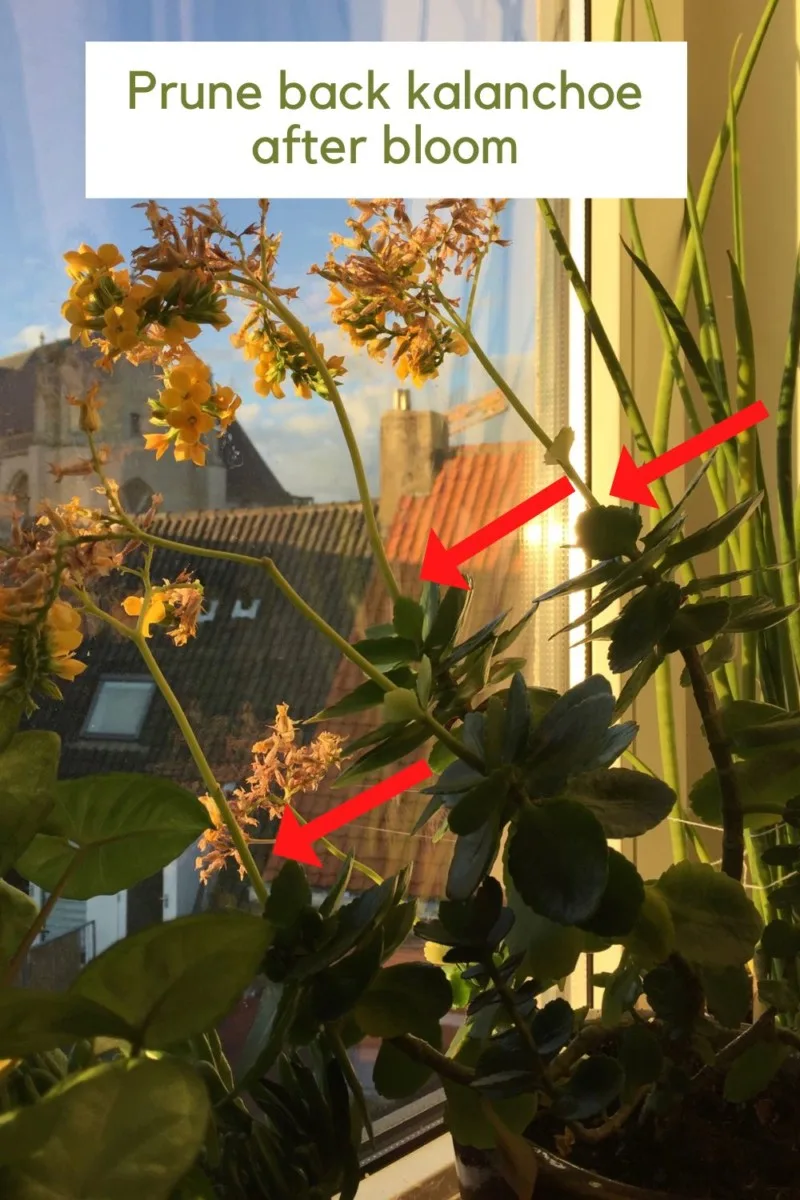
You can do a hard prune, but only as a last resort.
Let me clarify that I’m not advocating for chopping off perfectly good plants just because they don’t rebloom. But if you’ve tried everything else – in multiple consecutive years – you can treat the hard prune as your last resort solution.
My oldest kalanchoe got to a point where it was more woody stem than leaves. The flowering had also diminished considerably over time.
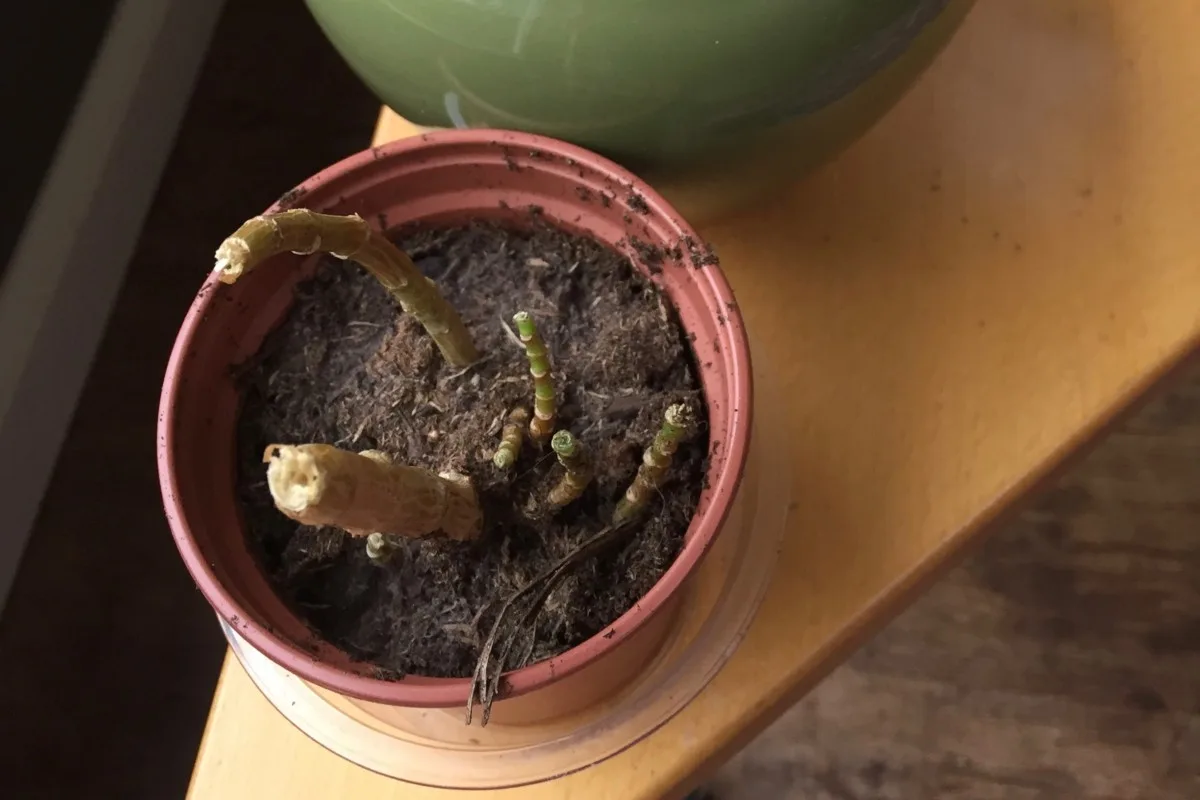
At the end of spring, I inspected the roots and saw that they were healthy, so it was time for a refresh. So I cut the leaves down to the nearest stem and cut the stem a few inches above the ground. Then I transferred the remaining root structure to a smaller pot, mostly as a reminder to myself to not water it as much during its very bare stage.
It took about a month for the plant to start growing, but it’s now starting to fill up again. I don’t expect it to flower the first year after a hard prune. But I think it will go back to its regular blooming schedule next winter. If this experiment turns out to be a roaring success, I might end up repeating it for all my kalanchoe plants as they get older and less productive.
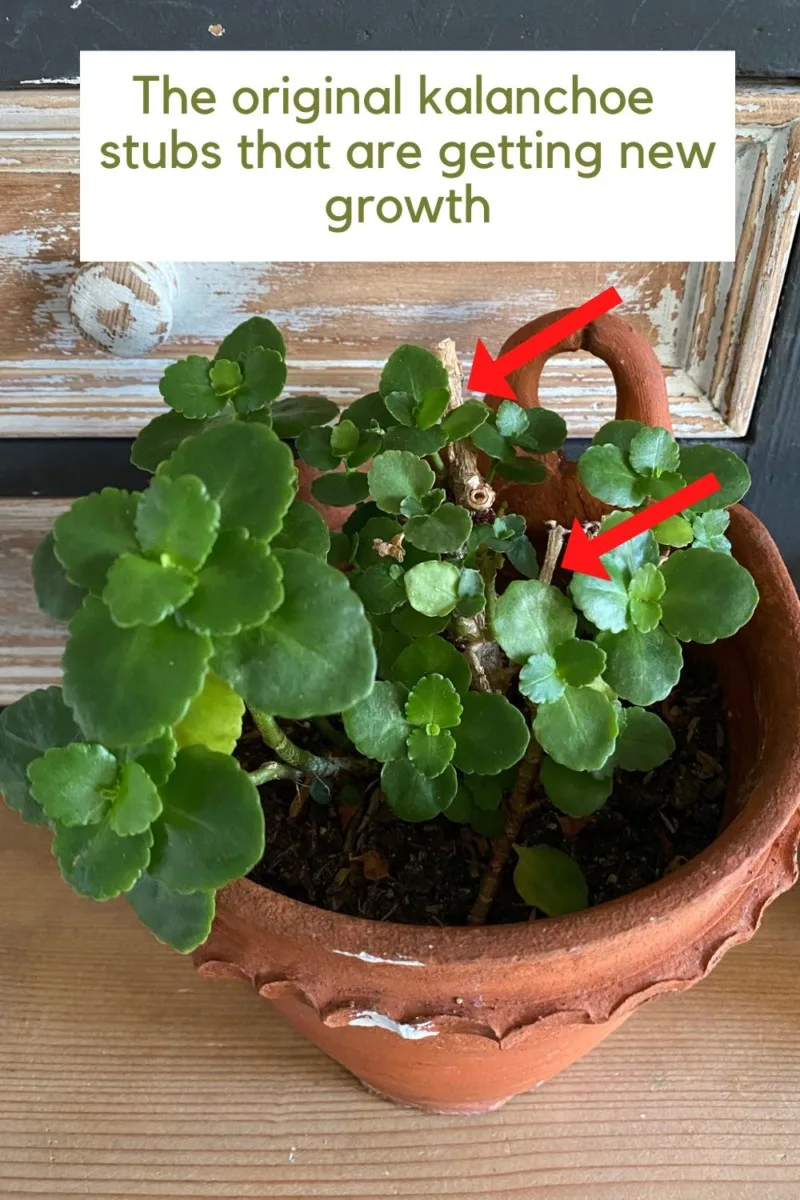
So if you got a blooming kalanchoe for Christmas, and are tempted to just say ”good riddance” and throw it out as soon as the flowers are gone, just give it another chance. Have a little faith in your green thumb and your kalanchoe will reward you with cheerful flowers every winter.
Why not try and keep that Christmas poinsettia for another year, too?

Get the famous Rural Sprout newsletter delivered to your inbox.
Including Sunday ramblings from our editor, Tracey, as well as “What’s Up Wednesday” our roundup of what’s in season and new article updates and alerts.


